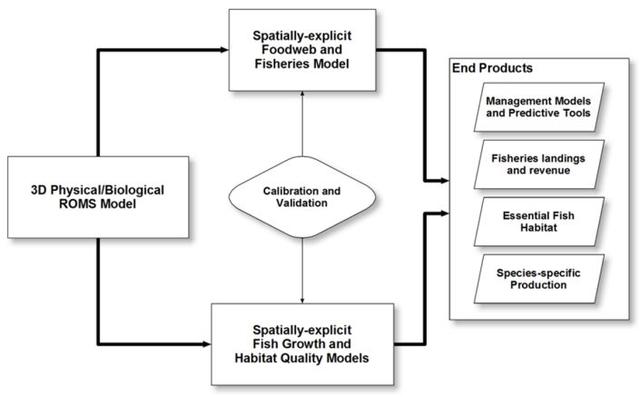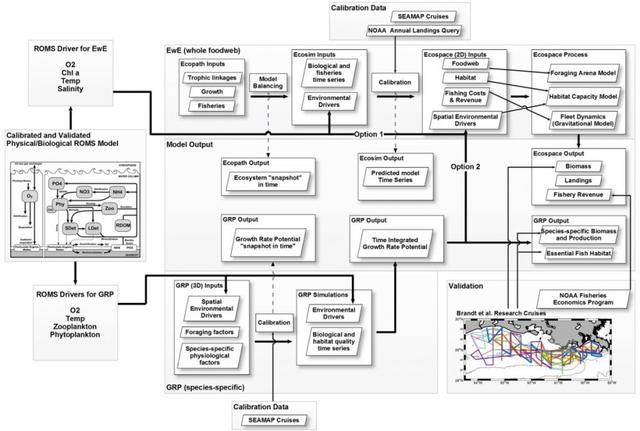Admission CTAs
Dr. Kim de Mutsert receives $900k grant from NOAA for NGOMEX 2016
Congratulations to Dr. Kim de Mutsert, who received a grant worth over $900K from the NOAA’s Center for Sponsored Coastal Ocean Research to continue her current research (see abstract and conceptual diagrams below).
NGOMEX 2016: User-driven tools to predict and assess effects of reduced nutrients and hypoxia on living resources in the Gulf of Mexico
Expansive hypoxia in the Northern Gulf of Mexico (NGOMEX) will continue to affect ecologically and economically important living resources, but the magnitude, predictability and even the direction of these changes remain elusive. Managers and stakeholders need readily available and quantitative tools to predict and evaluate the effects on living resources of planned nutrient reduction strategies aimed to minimize the hypoxic zone. We plan to develop user-friendly, management-scale relevant forecasting tools and quantitative indictors. We will also assess the minimum data needs (monitoring or modeling parameters, and time and space scales) to ensure these forecasts produce accurate and useful data required by managers and stakeholders. Previous work in the region by the P.I.s and colleagues resulted in three tested models and expansive datasets from seven cruises, which will be used to estimate effects of reduced nutrient inputs and hypoxic volume on living resources in the NGOMEX, and will form the basis of user-friendly tools to be transferred to resource managers. The coupling of two different fisheries modeling approaches (physiological-based and ecosystem-based) with the same 3D hydrodynamic/water quality model ensures that questions of varying levels of resolution can be addressed. Both coupled “physics to fish” approaches will assess the trade-offs of nutrient loading, namely the combined effects of increased productivity through bottom-up fueling, and altered habitat capacity or quality due to hypoxia. Interactive effects of other anthropogenic stressors such as fishing and climate change will be evaluated, as will the degree of model detail required. Outputs include species-specific fish growth rate potential as a measure of Essential Fish Habitat (EFH), and biomass and catch of ecologically and economically important living resources. Simplified indicators of ecosystem change will be developed. A high degree of interaction with both managers and stakeholders will be an integral part of the program. Frequent meetings with a team of advisors complemented with annual workshops will ensure the utility of the work for management purposes, and the transfer of tools to resource managers and stakeholders. The primary target audience is NOAA-NMFS coupled with the NOAA Center for Sponsored Coastal Ocean Research, Regional Sea Grant Extension and their fisheries stakeholders, the Northern Gulf Institute, the interagency Mississippi River/Gulf of Mexico Hypoxia Task Force, the NOAA RESTORE Act Science Program, and key state agencies. An initial workshop will define both manager needs and stakeholder expectations and answer the question of the requisite predictions and frequency of product delivery needed. The second workshop will include training and testing of the developed management tools, whereas the last workshop will focus on technology transfer and applications. This approach, and the use of adaptive science where feedback during workshops will be incorporated into work priorities, ensures transition of research to management throughout the scope of this project. The outcomes of this project will be an improved capability to assess the effects of alternative management strategies on ecosystem function, living resources, and fisheries revenue.
Simple diagram (click image for enlarged version):



